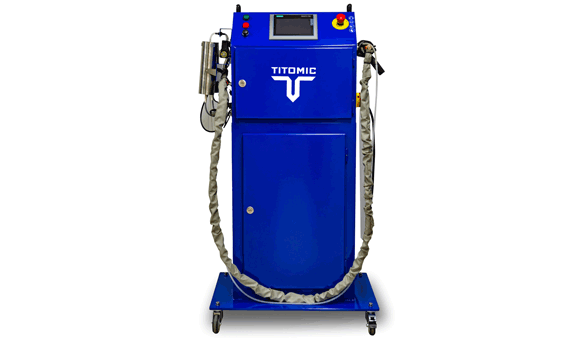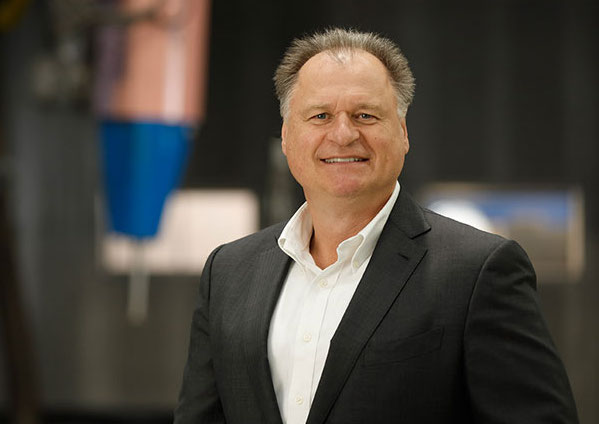Australian metal 3D printer manufacturer Titomic Limited has announced that the land branch of the Royal Netherlands Army, the Koninklijke Landmacht, has ordered ten of its D523 Cold Spray 3D printers.
Nine of these systems will be delivered to the Ukrainian military to support the nation’s ongoing war efforts against Russia. The D523 3D printers will be deployed near the front lines to enable in-field battle damage repair and maintenance at the point of need. This will reportedly improve battle readiness and extend mission capability.
Titomic’s largest D523 order to date, the total sales value of the deal is €772,000 (approximately AU$1.28 million). The delivery of the ten 3D printers is expected to begin over the coming months.
The firm claims that the order represents a significant milestone in its ongoing efforts to expand within the global defense sector.
“This order from the Royal Netherlands Army marks a pivotal moment for Titomic, showcasing our D523 System’s ability to provide versatile repair and maintenance solutions on a large scale and creating a significant revenue opportunity,” commented Herbert Koeck, Titomic’s Managing Director.

Titomic announces largest D523 3D printer order to date
Founded back in 2014, Titomic is primarily focused on the development and commercialization of its proprietary Titomic Kinetic Fusion (TKF) process.
A form of cold spray 3D printing, TFK fires metal powder at high velocity toward a substrate or metal part. After colliding with the surface, the powder particles deform and bond, creating layers. This process can be used to fabricate metal parts from scratch or build onto existing parts.
Incorporating this technology, the D523 is billed as a low-pressure cold spray system optimized for the on-site, on-demand coating and repair of metal parts. Weighing just 43kg and measuring 220 x 1420 x 266mm, the 3D printer is ideal for defense applications that require frequent transportation and relocation.
According to Titomic Limited, the new order represents a notable revenue opportunity and enhances the company’s position within the global aerospace and defense verticals. Following the announcement, the firm’s share price increased from $0.049 AUD to a high of $0.068 AUD on 26 March 2024.
Titomic is now working to secure similar deals with other militaries around the globe, including the Australian Defence Force. “This is a stride forward in our ongoing efforts to bring these innovative solutions to a wider market,” stated Koeck. “Titomic is aiming to attract more large-scale orders from innovators across various sectors in the coming months, including resources, defense, and aerospace, who are eager to leverage the advanced capabilities Titomic offers.”
The firm has already showcased its cold spray 3D printing technology through several successful demonstrations within Australia, demonstrating its suitability for a range of military and defense applications.
The Royal Netherlands Army’s Colonel C Heukers has stated that this order marks a clear shift toward the practical implementation of additive manufacturing within the nation’s military.
“This move signifies our unwavering commitment to leveraging advanced capabilities in real-world applications,” commented Heukers. “By providing these innovative technologies to Ukrainian forces, we demonstrate our trust in their ability to swiftly adopt and effectively utilize these tools to enhance military capabilities.”

Metal AM bolsters defense capabilities
The use of metal 3D printing technology to support military operations is growing. Indeed, Titomic’s cold spray systems are not the first to be sent to support Ukraine’s ongoing war efforts.
Last year, fellow Australian metal 3D printer manufacturer SPEE3D announced that it had supplied seven of its WarpSPEE3D cold spray 3D printers to the country as part of a US Department of Defence’s (DoD) Ukraine Security Assistance initiative. Speaking with 3D Printing Industry, Calum Stewart, SPEE3D’s Director of Defense Programs, explained that these 3D printers have been deployed near the frontlines to produce critical replacement “parts of consequence.”
The firm also delivered a 15-day training programme in Poland, educating a number of Ukrainian personnel on how to effectively utilize the 3D printer in the field. According to Stewart, SPEE3D’s overall goal in Ukraine is to ensure that there is “more equipment in the fight, more of the time.” This equipment is mostly “parts of consequence,” or any part that “is stopping a platform from operating, and the supply chain cannot provide.”
Another company to have sent its metal 3D printers to Ukraine is Essentium, which partnered with KVG to deploy its High-Speed Extrusion (HSE) 3D printers across multiple locations in Ukraine.
As with SPEE3D, key training was also provided to the Ukrainian military on site, to ensure the continuous and reliable production of key components. According to the two companies, the 3D printers are bolstering Ukraine’s defense response capabilities, facilitating the fast fabrication of critical components at the point of need.
Elsewhere, it was announced earlier this year that additive manufacturing software company 1000 Kelvin has partnered with the Norwegian Defence Research Establishment (FFI) spin-off Fieldmade to enable the rapid deployment of 3D printers in combat zones.
This collaboration sees 1000 Kelvin’s AMAIZE platform integrate with Fieldmade’s deployable additive manufacturing offerings. These include the firm’s NOMAD series of transportable 3D printing modules. The combination of these systems will reportedly enable militaries to start 3D printing as soon as the module arrives on site, allowing users to quickly adapt to operational needs.
What does the future of 3D printing hold?
What near-term 3D printing trends have been highlighted by industry experts?
Subscribe to the 3D Printing Industry newsletter to keep up to date with the latest 3D printing news. You can also follow us on Twitter, like our Facebook page, and subscribe to the 3D Printing Industry Youtube channel to access more exclusive content.
Are you interested in working in the additive manufacturing industry? Visit 3D Printing Jobs to view a selection of available roles and kickstart your career.
Featured image shows Titomic’s D523 Cold Spray 3D printer. Photo via Titomic.

